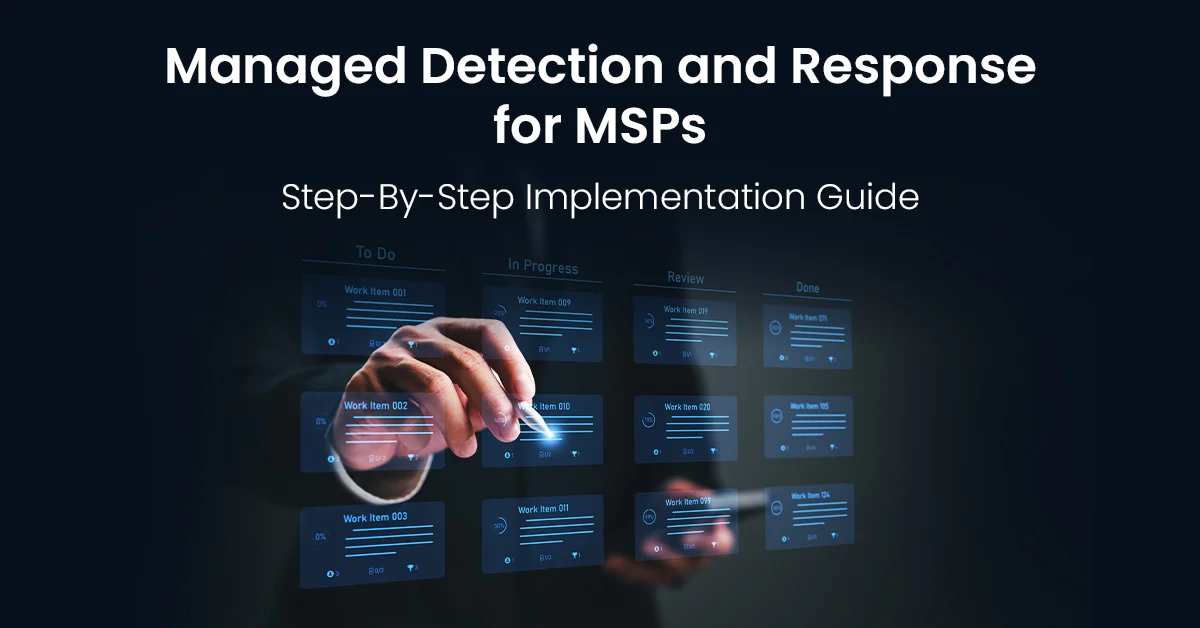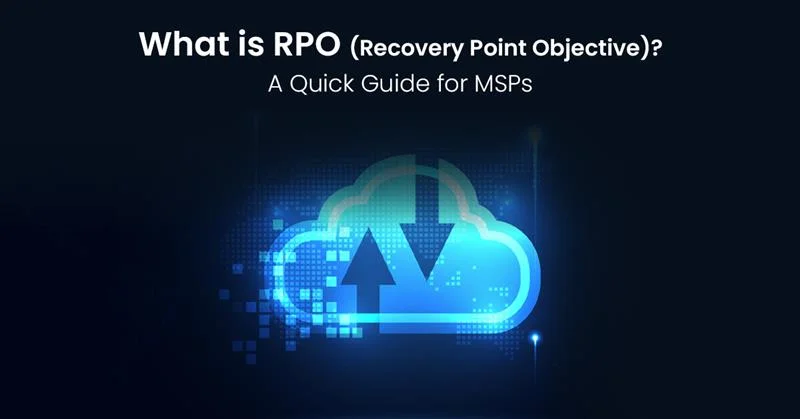Measurement serves as a fundamental instrument in management, enabling us to assess the effectiveness of our efforts, showcase our worth, allocate resources efficiently and pinpoint areas for enhancement. This is precisely the role fulfilled by key performance indicators (KPIs).
Key performance indicators represent the pivotal measurable markers of advancement towards predetermined objectives. This serves as focal points for both strategic and operational enhancement, establishing a foundation for informed decision-making and directing attention towards the most significant priorities for managed service providers (MSPs).
In this blog, we’ll explain everything about KPIs. It’s different categories, how to create one using best practices and the analysis of KPI vs. Metrics.
What are KPIs in the MSP channel?
Key performance indicators are quantitative measurements of performance over time toward a certain goal. It provides you with goals to strive for, milestones to assess your team’s success and information that makes choices easier for everyone in the company. KPIs support strategic advancement across all areas of your MSP, from marketing and sales to finance and HR.
Importance of Key Performance Indicators in your MSP business
Key performance indicators are a crucial tool for making sure you and your teams are contributing to the organization’s overarching objectives. These are a few of the main justifications for the necessity of key indicators:
- Maintain team alignment: KPI metrics keep you going in the right direction, whether your MSP uses this to measure your employee’s performance or the success of your projects.
- Conduct a health examination: Your MSP’s health may be realistically seen by key metrics, which include financial and risk indicators.
- Make changes: It provides your MSP with a clear picture of your accomplishments and shortcomings, enabling you to focus more on what is successful and less on what is not.
- Team Accountability: Performance indicators facilitate employee tracking and managerial growth that supports your employees to add value to your MSP.
Types of Key Performance Indicators
There are several types of KPIs. Some have a longer-term emphasis, while others are intended to track monthly progress toward a goal. Performance indicators are all related to strategy and goals, which is their one commonality. An overview of some of the most popular KPI categories that may be relevant to your MSP include:
- Strategic: These broad-based performance indicators track the objectives of the company. Usually, executives use one or two strategic KPI metrics to determine the organization’s current state of performance. Revenue, market share and return on investment are a few examples.
- Operational: These key indicators are usually concerned with organizational procedures and efficiency and assess performance over a shorter period. Ticket resolution time, client onboarding time, service level agreement (SLA) compliance and client retention rate are a few examples.
- Functional Unit: A lot of KPIs are associated with certain functions, like IT or finance. While IT may monitor average uptime or time to resolution, finance key indicators monitor return on assets or gross profit margin. It is also possible to categorize these functional Key performance indicators as strategic or operational.
- Leading vs. Lagging: You should understand the distinction between leading and lagging indicators, regardless of the kind of KPI you provide. Although leading key indicators are useful for forecasting results, trailing Key indicators monitor past events. To be sure, they’re tracking what matters most, organizations combine the two.
How to build KPIs for your MSP?
It might be tempting to measure everything, or at least the things that are most easily measured, when there is an abundance of data. It is important to ensure that the KPI metrics you are tracking are only assisting you in achieving your company objectives. One of the most crucial elements of the its definition is the strategic emphasis. The following are some excellent practices for creating appropriate Key performance indicators.
- Describe its intended usage: Find out what the users of the KPI report hope to accomplish and how they plan to use it by having a conversation with them. This will assist you in defining this key indicator that business users will find useful and relevant.
- Connect them to strategic objectives: You’re wasting time if your KPIs have no bearing on the objectives you have set for you. Every KPI should be closely linked to your overarching business objectives, even though it may be associated with a particular department inside your MSP, such as marketing or HR.
- Create SMART KPIs: The tried-and-true SMART method is used by the most successful Key performance indicators that stand for Specific, Measurable, Attainable, Realistic and Time-bound. For example, you can go with this “Achieve an 80+ customer satisfaction score by the end of the year”, or “Increase retention rate by 10% by next year”.
- Keep them simple: For everyone in the company to act based on your KPIs, they need all be aware of them. For this reason, data literacy is crucial. People who are proficient with data may make judgments that will influence change for the better.
- Make an iteration plan: You might need to update the performance indicators as your MSP and your clientele evolve. Maybe some of them are outdated, or maybe your performance calls for an adjustment. Make sure you have a strategy in place for reviewing and altering key performance indicators as needed.
- Steer clear of KPI overload: Remember that the most significant goals are included in the description of a KPI. Avoid KPI overload by concentrating on the most impactful metrics.
Things to consider while creating KPIs
It’s time to change your approach if your key indicators aren’t yielding the outcomes you want. Here are three steps you can take to make sure everyone in the company understands the significance of the KPIs and how to utilize them to make data-driven choices that affect your company’s operations.
- Choose what is most important: A combination of leading and lagging indicators should be used to ensure that you are measuring the right things. Understanding outcomes over time, such sales over the last 30 days, is made easier with the aid of trailing indicators. By predicting potential outcomes through data, leading indicators enable you to make necessary modifications to achieve better results.
- Establish a culture that is driven by KPIs: If individuals don’t know what Key performance indicators are and how to achieve them, it renders the entire effort futile. Boost data literacy throughout your company to ensure that all employees are working toward strategic goals. To ensure that everyone is making decisions that advance your company, train staff, provide them pertinent performance indicators and make use of a platform that helps you manage KPIs easily.
- Iterate: Update your key indicators in response to changes in the market, in your clientele, and inside your company to stay current. To ensure that teams are always informed, evaluate them at frequent meetings, closely examine performance to see whether any changes need to be made and publicize any updates.
What are the key differences between KPIs and Metrics?
Key performance indicators are closely related to the broad objectives of your MSP. Metrics, however, are connected to your MSP procedures rather than objectives.
To be more precise, there are three key distinctions between Key metrics and Key performance indicators:
- Synchronization of strategy: It complements the overarching objectives of your company. On the other hand, metrics are more useful for tracking certain actions and results.
- Actability: Due to their ability to guide your efforts toward a certain goal, KPIs are more actionable. In contrast, metrics are meaningless unless they are connected to a particular KPI.
- Pertinence: Top-level decision-makers who are concerned with the broader corporate strategy will find performance indicators more pertinent. However, metrics are more pertinent to workers who must keep an eye on their output and pinpoint areas in need of development.
How Team GPS helps you build and manage KPIs in a single pane of glass
Team GPS is a platform designed to empower MSPs in building and managing Key indicators effortlessly, all within a single, intuitive interface. With Team GPS, you can consolidate all the KPI data into a single pane of glass, providing a comprehensive overview of the performance metrics of their employees at a glance.
Furthermore, Team GPS offers customizable KPI tracking capabilities, allowing you to tailor Key indicators to align with their specific business goals and objectives. Whether it’s monitoring customer satisfaction, service level agreements (SLAs), or revenue growth, Team GPS provides the flexibility to track and analyze the metrics that matter most to your MSP.
Talk to us to explore how Team GPS can revolutionize your approach to KPI management.
Also Read: Customer Satisfaction Score: All you Need to know about CSAT








